Si-Tex T-760 Series radar, other ways of integration
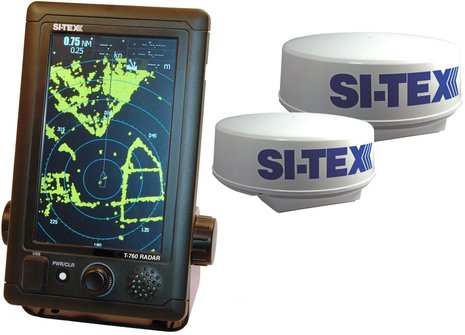 There’s more to the new Si-Tex T-760 Series radar than you’ll currently find on that product page. Those multi-speed radomes are unlike anything Si-Tex has offered before and contain digital processing that will eventually put 16-level true color target imagery on that 800 x 480 pixel touch screen (with a software update). Plus, the case is carved from solid aluminum and can be easily flush mounted. At a suggested retail of about $2,100 with the 18-inch radome and an impressive set of radar features, the T-760 looks like an interesting alternative for boaters who don’t want all their electronic navigation tools on a multifunction display. It might also work for those early adopter types who can’t get radar on the tablets they want to use for primary navigation…
There’s more to the new Si-Tex T-760 Series radar than you’ll currently find on that product page. Those multi-speed radomes are unlike anything Si-Tex has offered before and contain digital processing that will eventually put 16-level true color target imagery on that 800 x 480 pixel touch screen (with a software update). Plus, the case is carved from solid aluminum and can be easily flush mounted. At a suggested retail of about $2,100 with the 18-inch radome and an impressive set of radar features, the T-760 looks like an interesting alternative for boaters who don’t want all their electronic navigation tools on a multifunction display. It might also work for those early adopter types who can’t get radar on the tablets they want to use for primary navigation…
Some old salts value redundancy over the easy integration and common interface of an MFD, and they might pair the T-760 with one of the new Si-Tex SVS-760 Series (though they’re sourced from a different manufacturer). The plotter only “C” model — which can run either C-Map Max or Navionics Gold cartography — retails at $799, the “F” fishfinder at $749, and the SVS-760CF combo above at $999. At 5.4-inches wide and 8.9-inches high, the T-760 display might also fit neatly next to an existing 10 or 12-inch plotter that doesn’t have a radar option. But note how close that profile is to, say, an iPad mini in portrait mode, and that the head-up, look-ahead style looking good on the T-760 screen can also work well in many charting apps.
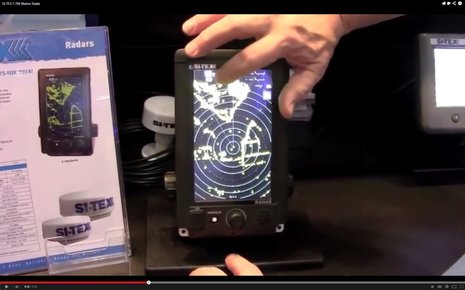 You may also think of a tablet when you watch Si-Tex’s Allen Schneider finger tap range changes in this T-760 demo video. Apparently, you can also do many tasks with the display’s twist and push-to-enter knob and a set of “favorite” icons that appears at the bottom of the screen with a tap, but in my experience touch is great for chores like selecting a blip you want to track with MARPA or an AIS target you want more detail on. Well, that is if the touch controls are well designed and fast, and Schneider says they are…
You may also think of a tablet when you watch Si-Tex’s Allen Schneider finger tap range changes in this T-760 demo video. Apparently, you can also do many tasks with the display’s twist and push-to-enter knob and a set of “favorite” icons that appears at the bottom of the screen with a tap, but in my experience touch is great for chores like selecting a blip you want to track with MARPA or an AIS target you want more detail on. Well, that is if the touch controls are well designed and fast, and Schneider says they are…
I wish the menu system was shown in the video, but I did get the low res images above, and Schneider told me that those menu buttons are each about a small finger high and easy to tap (or knob through). What’s illustrated is the ability of the T-760 to use custom Transmit/Standby periods to save power, and also that it can display a go-to waypoint sent over NMEA 0183 from a plotter. In fact, some 0183 connections — GPS and Heading — are required before the radar can do MARPA (called ATA in the spec list below), and you’ll get the most from this device if its three 0183 ports are also listening to AIS and talking to your plotter.
I guess some graybeards can integrate raw radar and charts pretty well in their heads, but just having a simple waypoint from the plotter on the radar screen, and/or a target message from the radar on the electronic chart, can really help with situational awareness. It may be a pain to make all the NMEA 0183 connections, but it is doable, and it’s also interesting that 0183 messaging is being used to connect boat data to nav apps over WiFi. With no radar sensor available for direct use on a tablet, might some apps and multiplexor developers work on easy data integration with the T-760? Might Si-Tex — already smart to offer products the big boys don’t — eventually make a similar radar with its own WiFi data output, even radar image streaming?
PS 5/8: Si-Tex just sent some impressive photographs of their T-760 testing near Shinnecock Inlet on Long Island’s South Shore. As seen in the right hand screen, just the 18-inch radome targeted ships over 20 miles away.


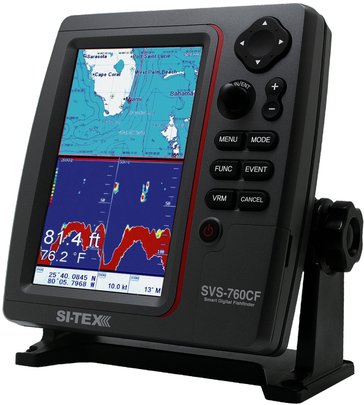
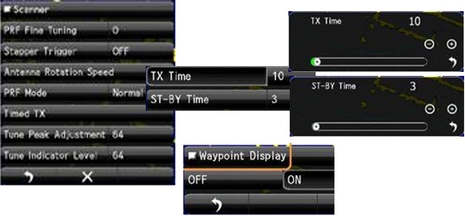
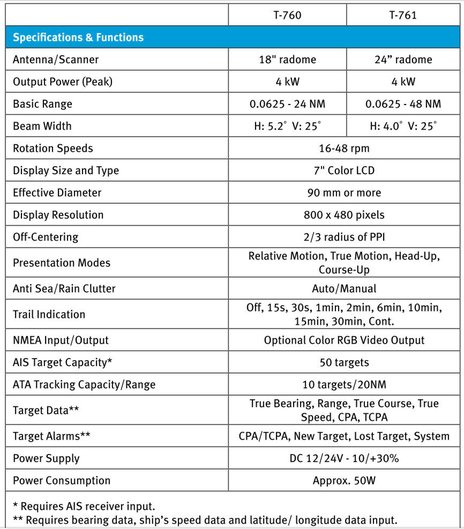
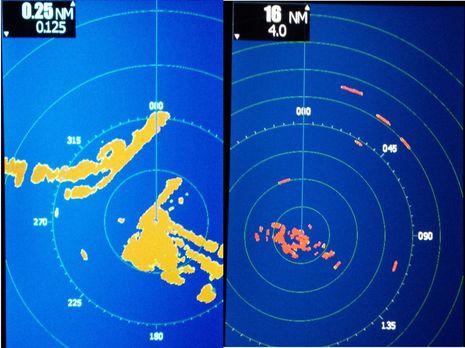


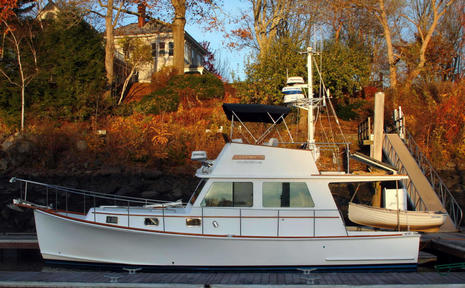








Another tip of the hat to Allen & Ted at Si-Tex for once again finding a way to introduce a product that manages to be traditional and innovative at the same time. There have been many discussions I’ve had with both customers and other NMEA Electronics Dealers around the country, and it’s still a pleasant surprise to see that the demand for ‘stand alone’ equipment like a sonar or radar are requested. It does happen to vary a bit from region to region, but surprisingly one thing I’ve noticed is that it’s not just the ‘old salts’ who still demand dedicated displays for each system.
Many Gen X mariners have been vocal in their desire for such a configuration, be it for instrument independence the desire to avoid the ‘split-screen’ conundrum. With the ability to provide a lollipop and of course AIS targets, it’s a wonderful way to go; if there is enough room at the helm! A unit like this, ruggedly built yet cost and form factor effective, will hopefully find a home on quite a few boats that could utilize it in many of the various scenarios you mentioned Ben. I hope this is the case because in dealing with many boaters who are going in the tablet-nav direction, one VERY alarming comment I have heard way too often over the past 12 months is ‘Hell, with AIS, who needs radar anymore!’ This is a very pervasive thought amongst the masses, as it is seems not everyone understands the limitations to Class B transponders, especially here in NY Harbor. We’ll leave that for another day, as the information is out there [ http://www.navcen.uscg.gov/?pageName=AISworks ]. Remember fans, AIS is still just an AID to collision avoidance!! God bless it, of course, but SOTDMA!!! It has it’s limits!
To wrap it up and also propose another perspective, I can see this unit as an optional secondary radar solution for the many boats with rigged with fully integrated MFDs with skippers that might feel a bit more secure having a 21st century scanner ready at a moments notice. I may be biased, but radar has gotten me home when GPS was ‘Out of Service’, so I don’t consider it to be overkill. Look at Gizmo!
We will see as the roll out moves forward, but I see the T-700 series landing in more than just one type of boat, and I’m looking forward to testing one out for myself out in the snot to see how she handles. Based on the pedigree of the OEM, however, I have no doubt she will impress.
I guess that I am one of the “old salts” that Labozza is referring to, as for redundancy purposes, I also prefer radar to be a stand alone unit. I believe that all major systems on a boat should have a backup. Two MFD’s would meet this criteria, but that doubles the cost without adding much to the utility. I consider radar and AIS transponders to be a backup for each other, provided that is, that the other vessel is also equipped with an AIS transponder. But that is a discussion for another time.
We recently encountered a situation that showed the value of both radar and AIS. We were in the Georgia ICW in thick fog when we encountered an opposite direction tug. We both had radar, AIS transponders (I have a Si-Tex) and were in voice contact via DSC long before we could see each other. The tug loomed out of the fog exactly where we expected him to be, and the pass was made safely.
We could have anchored out of the channel until the fog lifted, but then we would have missed the nearly high tide needed for the shallow spot ahead.
I cannot understand why Navco / raymarine / Garmin insist on splitting their wide screens to get a vertical image of the Radar.
I will be happy to spend my hard earned money if Navico introduce a standalone Briadbabd Radar in a vertical form. Navico has a lot of screens of different sizes in their portfolio to chose one.
Furuno has a 7″ standalone option but no integration with AIS. Cannot imagine why. Well done Si-Tex.
Si-Tex sent some impressive screen photos they made while field testing the T-760 radar. I added a couple of them as a PS to the entry but then realized they’re on Facebook:
https://www.facebook.com/Sitex.Marine